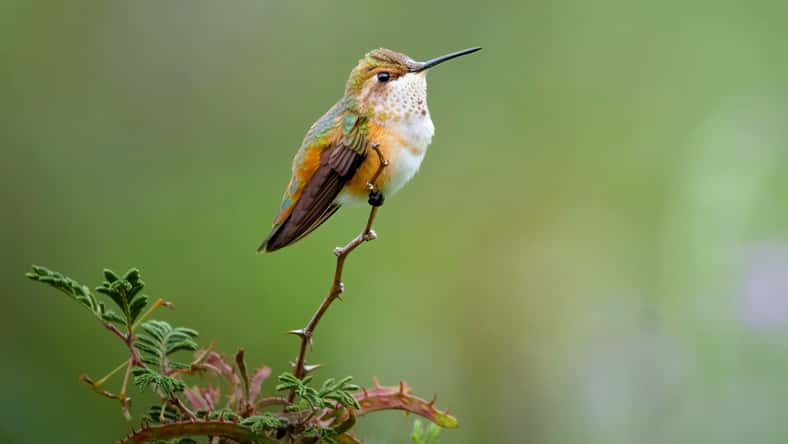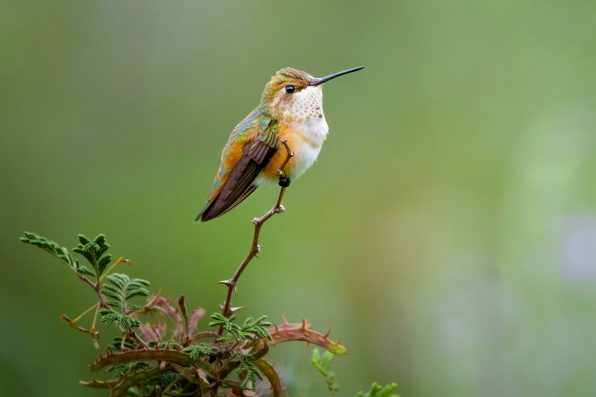Some Hummingbirds Fly 2,000 Miles Nonstop During Migration, With One Species Known As The Rufous Hummingbird Holding A Travel Record Of 3,500 Miles

If you’ve been fortunate enough to see a hummingbird in the wild, you know that it flits from flower to flower at lightning speed.
You’ve probably also noticed the bird’s small, delicate size. It doesn’t seem at all suited for long flights. But, packed within a hummingbird’s body, there is a lot of power, strength, and stamina.
Research has shown that ruby-throated hummingbirds can fly for around 1,370 miles without taking a break.
To give you an idea of how far that really is, it’s like the distance between Atlanta and Albuquerque or Tokyo and Taipei. And that’s not even the farthest that hummingbirds can fly without stopping for a rest.
Among migrating hummingbirds, rufous hummingbirds have the longest migration route. The species can travel 2,000 miles from southern Mexico to southeastern Alaska. One time, a rufous hummingbird was observed traveling 3,500 miles, a record that still stands today.
Every fall, hummingbirds migrate from the eastern United States to Central America. Between 2010 and 2014, researchers from the University of Southern Mississippi monitored 2,729 hummingbirds as they traveled through southern Alabama.
They tracked the birds’ flight and studied their habits. Then, they analyzed the birds’ mass and wingspan and predicted their flight range using a computer program.
They learned that ruby-throated hummingbirds fly across the Gulf of Mexico without ever stopping. Ruby-throated hummingbirds are about three inches long.
They are the most common hummingbirds in North America. They are usually found across the eastern United States to southern Canada.

Justin Martens Wolf/Wirestock Creators – stock.adobe.com – illustrative purposes only, not the actual hummingbird
Rufous hummingbirds breed farther north than any other hummingbird. They frequent the West Coast and the Rocky Mountains.
Before starting migration, hummingbirds will typically gain 25 to 40 percent of their body weight to have enough energy to support their long flight, as food is nonexistent over the open waters.
Not all hummingbird species like to stay in the air for very long, though. Anna’s hummingbirds are one of the only species that doesn’t always migrate south to warmer regions during the winter. They stick around their natural habitat along the Pacific Coast.
They are also territorial, but some have been found outside their typical range before in places like southern Alaska, New York, Florida, Louisiana, and Newfoundland.
When temperatures drop, Anna’s hummingbirds gradually gain weight throughout the day by converting sugar to fat in order to stay warm.
Even hummingbirds with insufficient stores of body fat can survive cold weather by lowering their metabolic rate and entering a state of torpor.
If you want to help hummingbirds on their journeys, you can leave hummingbird feeders outside. They need to be replenished regularly and cleaned often because of the bacteria that can grow in them, which will make the hummingbirds sick.
The best way to help hummingbirds is to plant flowers from which they can sip nectar. Research what hummingbirds are in your area and provide them with native plants to feed on.
Sign up for Chip Chick’s newsletter and get stories like this delivered to your inbox.
More About:Animals